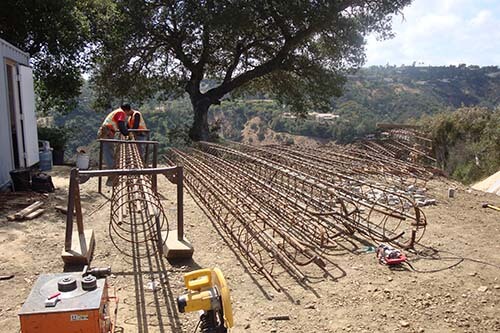In civil engineering, shoring design plays a crucial role in providing temporary support to structures during construction or renovation projects. It involves the use of various techniques and materials to ensure the structural stability and safety of the surrounding environment. Let’s delve into the importance of shoring design and its impact on construction projects.
- Understanding Shoring Design Shoring refers to the process of supporting a structure or excavation to prevent collapse or instability. Shoring design involves the careful analysis of site conditions, soil properties, loads, and other factors to determine the most effective shoring system. The goal is to provide temporary support to the structure until it can sustain itself without external assistance.
- Ensuring Safety and Structural Stability The primary objective of shoring design is to ensure the safety of workers, the public, and adjacent structures. During construction or renovation projects, structures are often exposed to excessive loads or changes in the surrounding soil conditions. Shoring systems are designed to resist these forces and prevent structural failure or collapse. The careful selection of shoring techniques and materials is crucial to ensure the stability of the structure and mitigate potential risks.
- Types of Shoring Systems There are various types of shoring systems used in civil engineering, depending on the specific project requirements and site conditions. Some common shoring techniques include:
- Soldier Pile and Lagging: This system involves the installation of vertical steel piles (soldier piles) at regular intervals along the excavation perimeter. Horizontal timber or steel planks (lagging) are then placed between the soldier piles to retain the soil.
- Sheet Piling: Sheet piles are driven vertically into the ground to create a barrier that supports the excavation and prevents soil movement. They are commonly used in waterfront projects or areas with high groundwater levels.
- Braced Excavation: Bracing systems consist of horizontal beams or struts that support the excavation walls. They are often combined with other shoring techniques to provide additional stability.
- Importance of Professional Shoring Design Designing an effective shoring system requires a thorough understanding of soil mechanics, structural engineering principles, and local building codes and regulations. It is crucial to engage the expertise of professional civil engineers and shoring specialists who have experience in analyzing site conditions, selecting appropriate shoring techniques, and ensuring compliance with safety standards. Professional shoring design minimizes risks, enhances project efficiency, and safeguards the integrity of the structure and its surroundings.
- Collaborative Approach Successful shoring design involves collaboration among various stakeholders, including civil engineers, geotechnical engineers, architects, and construction teams. Through effective communication and coordination, the project team can develop an optimized shoring design that addresses site-specific challenges and ensures a safe working environment.
In conclusion, shoring design is a critical aspect of civil engineering, providing temporary support and stability to structures during construction or renovation. It plays a vital role in ensuring the safety of workers, protecting adjacent structures, and maintaining the structural integrity of the project. By engaging experienced professionals and adopting a collaborative approach, shoring design can effectively mitigate risks and contribute to the success of construction projects.





I like the helpful information you provide in your articles. I will bookmark your blog and check again here frequently. I am quite certain I will learn many new stuff right here! Good luck for the next!